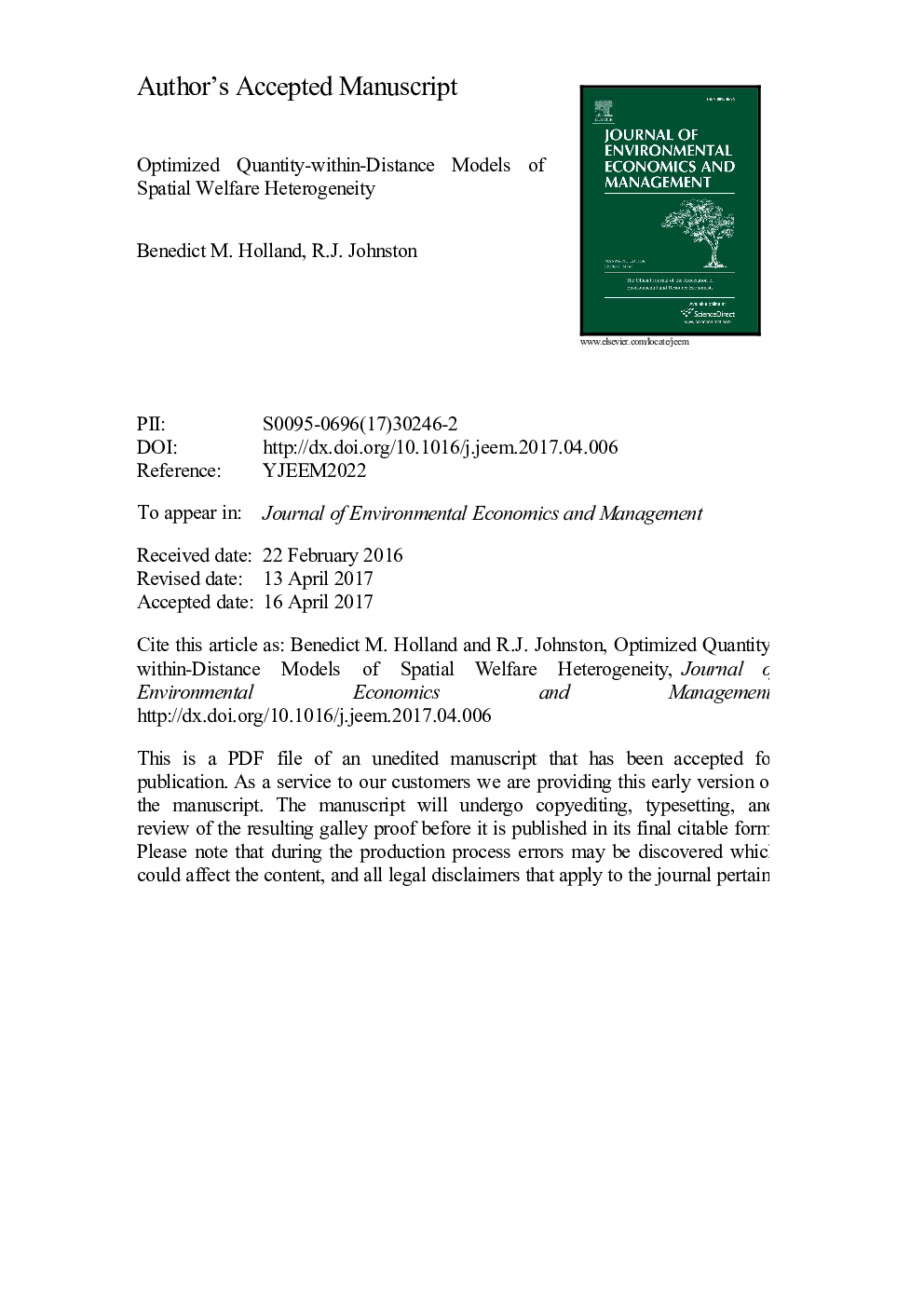| Article ID | Journal | Published Year | Pages | File Type |
|---|---|---|---|---|
| 5100375 | Journal of Environmental Economics and Management | 2017 | 55 Pages |
Abstract
Spatial welfare heterogeneity is frequently modeled within stated preference analysis as a function of discrete or continuous distance between households and affected resources. A common example is distance-decay analysis. Although distance-based models such as these are easily estimated, the ubiquity of this paradigm can lead to analyses that overlook other forms of analysis with equal or greater relevance. This paper develops an alternative approach to spatial heterogeneity in stated preference willingness to pay (WTP) based on the quantity or area of an affected resource surrounding each respondent at an optimized distance band or radius, with distance bands optimized using a grid-search algorithm that maximizes model likelihood. Methods and results are illustrated using a choice experiment on riparian land restoration in Maine, USA. The resulting quantity-within-distance model identifies systematic spatial patterns that are undetectable using distance-based analysis and directly relevant for welfare analysis.
Keywords
Related Topics
Social Sciences and Humanities
Economics, Econometrics and Finance
Economics and Econometrics
Authors
Benedict M. Holland, Robert J. Johnston,
